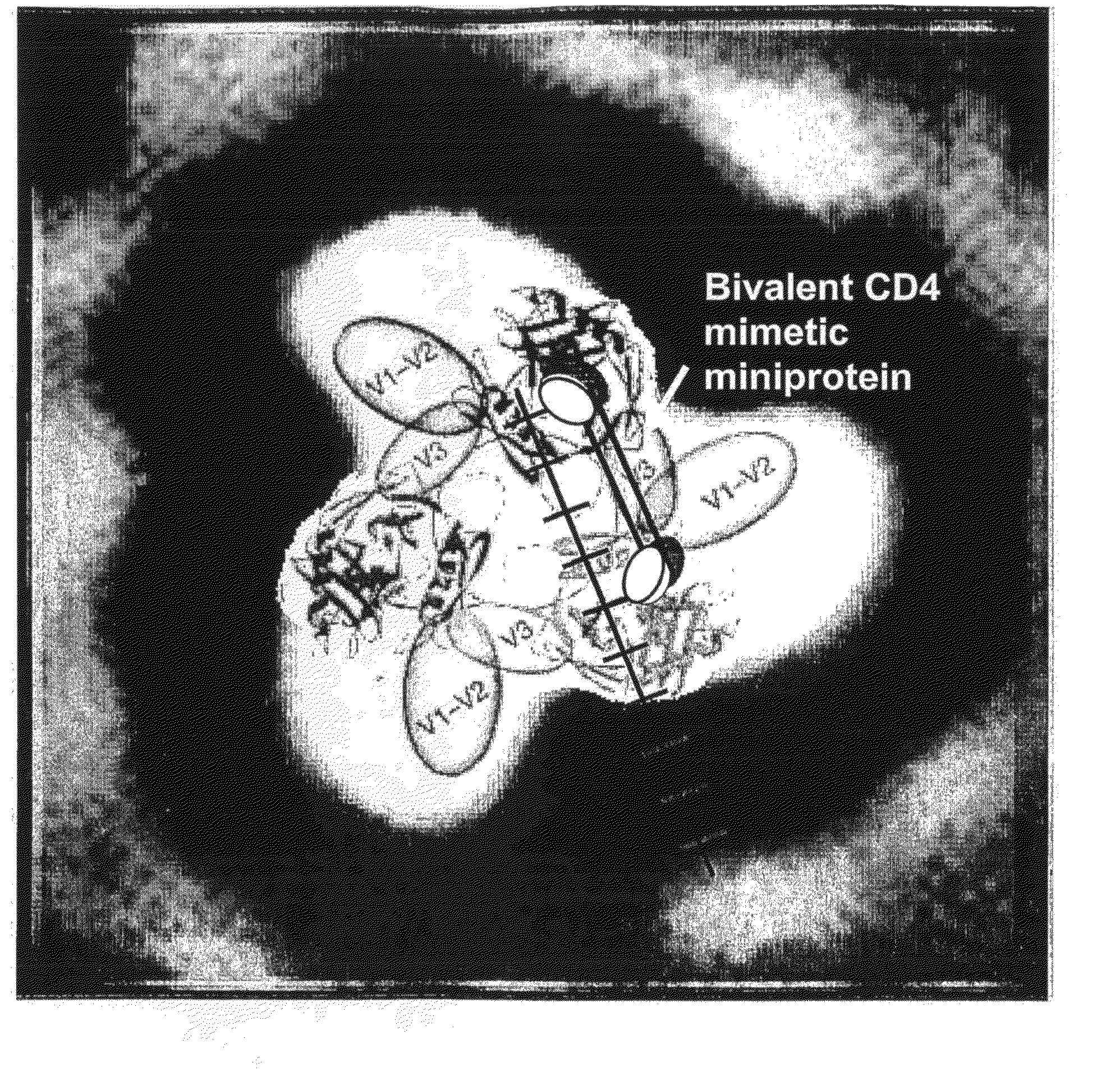Constrained HIV envelope-based immunogen that simultaneously presents receptor and coreceptor binding sites
- Summary
- Abstract
- Description
- Claims
- Application Information
AI Technical Summary
Benefits of technology
Problems solved by technology
Method used
Image
Examples
example 1
[0091]Recently, the X-ray crystal structure of free gp120 was solved (1) and along with X-ray tomography images of envelope spikes (3), used to build a computational model of the envelope trimer (1). This model indicates that any two CD4 binding sites in the envelope trimer are separated by roughly 4-5 nm. The model is overlayed with a ruler as shown in FIG. 1. The line between the binding sites is a “ruler” divided into 1 nm units, which was used to estimate distances between binding sites. Recently, the present inventors showed that bivalent polypeptides containing two CD4M9 moieties separated by polyethylene glycol linkers that placed the binding residues 5.2 nm (bi-CD4M9-MS) or 6.4 nm (bi-CD4M9-LS) apart demonstrated more potent HIV inhibition than monomeric CD4M9 (4 and 5) when used with surface HIV virion. Recent studies using Surface Plasmon Resonance to assess binding to trimers showed that the forward rate constant for binding of bi-CD4M9-MS was significantly different from...
PUM
| Property | Measurement | Unit |
|---|---|---|
| Length | aaaaa | aaaaa |
| Solubility (mass) | aaaaa | aaaaa |
| Distance | aaaaa | aaaaa |
Abstract
Description
Claims
Application Information
 Login to View More
Login to View More - R&D
- Intellectual Property
- Life Sciences
- Materials
- Tech Scout
- Unparalleled Data Quality
- Higher Quality Content
- 60% Fewer Hallucinations
Browse by: Latest US Patents, China's latest patents, Technical Efficacy Thesaurus, Application Domain, Technology Topic, Popular Technical Reports.
© 2025 PatSnap. All rights reserved.Legal|Privacy policy|Modern Slavery Act Transparency Statement|Sitemap|About US| Contact US: help@patsnap.com



